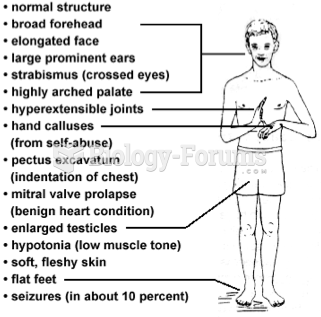Answer to Question 1
B
Answer to Question 2
Once the firm has completed segmenting a market, it must then evaluate each segment to determine its attractiveness and whether it offers opportunities that match the firm's capabilities and resources. Just because a market segment meets all criteria for viability does not mean the firm should pursue it. Attractive segments might be dropped for several reasons including a lack of resources, no synergy with the firm's mission, overwhelming competition in the segment, an impending technology shift, or ethical and legal concerns over targeting a particular segment. Based on its analysis of each segment, the firm's current and anticipated situation, and a comprehensive SWOT analysis, a firm might consider five basic strategies for target market selection.
- Single Segment Targeting-Firms use single segment targeting when their capabilities are intrinsically tied to the needs of a specific market segment. Many consider the firms using this targeting strategy to be true specialists in a particular product category. Good examples include New Belgium Brewing (craft beer), Porsche, and Ray-Ban. These and other firms using single segment targeting are successful because they fully understand their customers' needs, preferences, and lifestyles. These firms also constantly strive to improve quality and customer satisfaction by continuously refining their products to meet changing customer preferences.
- Selective Targeting-Firms that have multiple capabilities in many different product categories use selective targeting successfully. This strategy has several advantages including diversification of the firm's risk and the ability to cherry pick only the most attractive market segment opportunities. Procter & Gamble (P&G) uses selective targeting to offer customers many different products in the family care, household care, and personal care markets. Besides the familiar deodorants, laundry detergents, and hair care products, P&G also sells products in the cosmetics, snack food and beverages, cologne, and prescription drug markets.
- Mass Market Targeting-Only the largest firms have the capability to execute mass market targeting, which involves the development of multiple marketing programs to serve all customer segments simultaneously. For example, Coca-Cola offers roughly 400 branded beverages across many segments that fulfill different consumer needs in over 200 countries around the world. Likewise, Frito-Lay sells hundreds of different varieties of snack foods around the world.
- Product Specialization-Firms engage in product specialization when their expertise in a product category can be leveraged across many different market segments. These firms can adapt product specifications to match the different needs of individual customer groups. For example, many consider Littmann Stethoscopes, a division of 3M, as the worldwide leader in auscultation technology. Littmann offers high-performance electronic stethoscopes for cardiologists, specially designed stethoscopes for pediatric/infant use, lightweight stethoscopes for simple physical assessment, and a line of stethoscopes for nursing and medical students. The company also offers a line of veterinary stethoscopes.
- Market Specialization-Firms engage in market specialization when their intimate knowledge and expertise in one market allows them to offer customized marketing programs that not only deliver needed products but also provide needed solutions to customers' problems. The Follett Corporation is a prime example. Follett specializes in the education market by serving hundreds of schools, colleges, and universities in the United States and Canada. The company's slogan Simplifying the delivery of education everywhere is based on the firm's goal to be the leading provider of educational solutions, services, and products to schools, libraries, colleges, students, and lifelong learners.
In addition to targeting a subset of current customers within the product/market, firms can also take steps to target noncustomers. There are many reasons why noncustomers do not purchase a firm's products. These reasons can include unique customer needs, better competing alternatives, high switching costs, lack of product awareness, or the existence of long-held assumptions about a product. The key to targeting noncustomers lies in understanding the reasons why they do not buy and then finding ways to remove these obstacles. Removing obstacles to purchase, whether they exist in product design, affordability, distribution convenience, or product awareness, is a major strategic issue in developing an effective marketing program.







